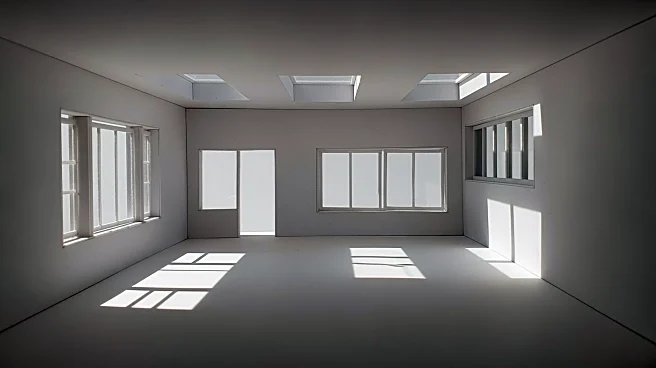What's Happening?
A recent study has focused on the impact of window layouts and architectural elements on daylighting performance in rooms with a single window wall. The research highlights the importance of room depth
and window orientation in maximizing daylight penetration. It suggests that deeper rooms require larger glazing areas to meet daylighting standards, while south-facing windows in the Northern Hemisphere receive the most sunlight. The study also examines the window-to-wall ratio (WWR), finding that a 40% WWR is generally sufficient for useful daylight. The research underscores the role of window size, shape, and position in daylighting, with horizontal windows providing more uniform illumination than vertical ones. The study employs various daylighting metrics and simulation tools to evaluate performance, noting the potential of AI and machine learning in predicting daylighting outcomes.
Why It's Important?
Daylighting is crucial for energy efficiency and occupant comfort in buildings. Optimizing natural light can reduce reliance on artificial lighting, lowering energy costs and enhancing indoor environments. The study's findings can guide architects in designing spaces that maximize daylight, contributing to sustainable building practices. By understanding the impact of room layout and window design, architects can create spaces that offer better visual comfort and energy performance. The research also highlights the potential of advanced simulation tools and AI in improving daylighting predictions, which could lead to more accurate and efficient design processes.
What's Next?
The study suggests further exploration of AI and machine learning models to enhance daylighting predictions. Architects may consider integrating these technologies into their design processes to improve accuracy and efficiency. Additionally, the findings could influence building codes and standards, promoting designs that prioritize natural light. As sustainable building practices gain traction, there may be increased demand for designs that optimize daylighting, potentially leading to innovations in window technology and architectural design.
Beyond the Headlines
The study raises ethical considerations regarding the balance between energy efficiency and occupant comfort. While maximizing daylight can reduce energy consumption, it may also lead to issues like glare and overheating. Architects must consider these factors to ensure that designs meet both environmental and human needs. The research also highlights cultural differences in daylighting preferences, suggesting that design solutions may need to be tailored to specific regions and climates.












